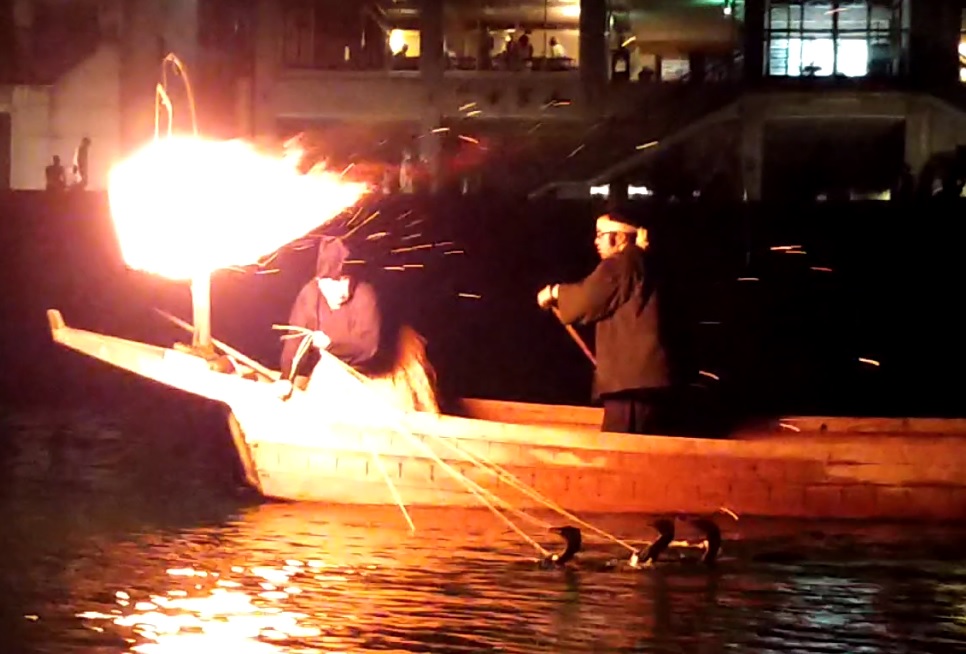Nagaragawa River in Gifu Prefecture, Japan, is one of famous area for cormorant fishing. When cormorant fishing started in Japan? We are not sure. Someone says it came from China with rice farming and someone says it originally started in Japan independently. Some clay images giving expression to cormorant fishing were unearthed from some ancient tombs in Japan. Therefore, it seems cormorant fishing started in the Tumulus period in Japan. In Mino Province, current Gifu Prefecture, it is said that cormorant fishing started from the 7th century.
Nobunaga Oda was the first person who used cormorant fishing as “Omotenashi”, hospitality. In June, 1568, Houkinokami Akiyama who was a messenger of Shingen Takeda visited Gifu Castle to see Nobunaga and to deliver gifts of celebration for engagement of Shingen’s daughter and Nobunaga’s first son. Nobunaga invited Houkinokami to watch cormorant fishing. Nobunaga ordered cormorant fishermen to let Houkinokami watch cormorant fishing. Nobunaga arranged to ride into same boat as Houkinokami to watch it. After watching cormorant fishing, Nobunaga selected good ayu, sweetfish by himself and sent them to Shingen.
In 1615, on the way back to home from summer campaign of the siege of Osaka, Ieyasu Tokugawa and his son Hidetada watched cormorant fishing in Gifu. After this, people started presenting ayu sushi to family positioned to accede to the Tokugawa Shogunate. At the same time, Tokugawa Shogunate granted cormorant fishermen a privilege such as free ship navigation on the river. Tokugawa Shogunate provided protection to cormorant fishermen and fishing.
In 1878, when the Emperor Meiji visited Gifu, Tomomi Iwakura who traveled with the Emperor watched cormorant fishing and he sent sweetfish to the Emperor. After this, Gifu Prefecture thought to ask the Imperial Household Agency to protect cormorant fishing under their control and requested them to settle “Goryoba” which is special cormorant fishing area dedicated to imperial family and “Kanshu” who controls the area and special cormorant fishermen. As a result, the Imperial Household Agency decided 3 areas of Nagaragawa River as “Goryoba” and prohibited fishing in those areas. Cormorant fishermen got a stable position after this.
Currently, over 100 thousands people visit Gifu to watch cormorant fishing every year. Gifu City is targeting Nagaragawa River Cormorant Fishing to be registered as Intangible Cultural Heritage by UNESCO.
Cormorants are quite pretty and I recommend you to visit Gifu in summer time to watch cormorant fishing.




Comments